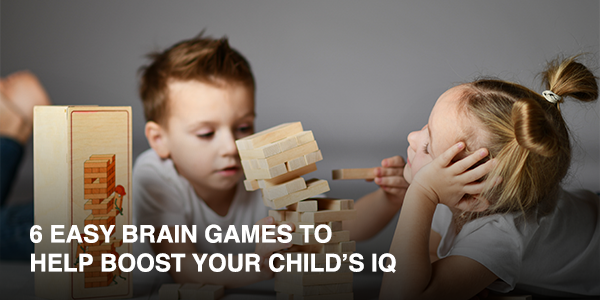
Children have a short attention span, so they’re always on the hunt for games and activities to keep them occupied! Boost your kids’ cognitive skills and keep them engaged with outdoor games and brain teasers. Brain games are supercharging not just for kids but parents too. Let us explore some fun brain games to help your child improve their coordination, concentration, and fine motor skills.
Building Blocks
Building blocks are a fantastic way to explore your child’s creativity. It can be eye-opening to discover the magical worlds they can create with just simple blocks. As a plus, blocks help to improve focus and give a sense of space, color and coordination.
Puzzles
Problem-solving is a real-world life skill your kids can master with puzzles. It’s also a great way to teach patience and the importance of finishing the job although it can be tedious at times. Start with smaller puzzles and work your way up as your child’s level increases.
Memory Game
Display some objects for a few seconds and remove them from their sight. Ask them to recollect their names and observe how your children try to remember those objects. For children, this game improves their language skills and visual memory.
A memory game with numbers is also interesting. Try playing it with multiples of a number or just odd and even numbers specifically. This enhances your child’s number skills and mental math abilities.
Storytelling
Make a story out of words or sentences. Let your child suggest a word and continue adding words to create a meaningful story at the end. Storytelling helps to spark imagination and creativity. This game can open their eyes to the magic of words and new meanings.
Simon Says….
Children love to get fun instructions, especially if it involves quick physical movements. Simon says, is a classic favorite among children as they compete with their teammates to complete the instructions correctly. It helps improve your child’s attention and understanding skills.
Rubiks Cube
Rubiks Cube can be a challenge for both children and adults. Getting the same colored squares together on all sides of a cube involves mental calculation and cracking the formula. Give it to your child and observe how each turn takes your child close to his or her goal.